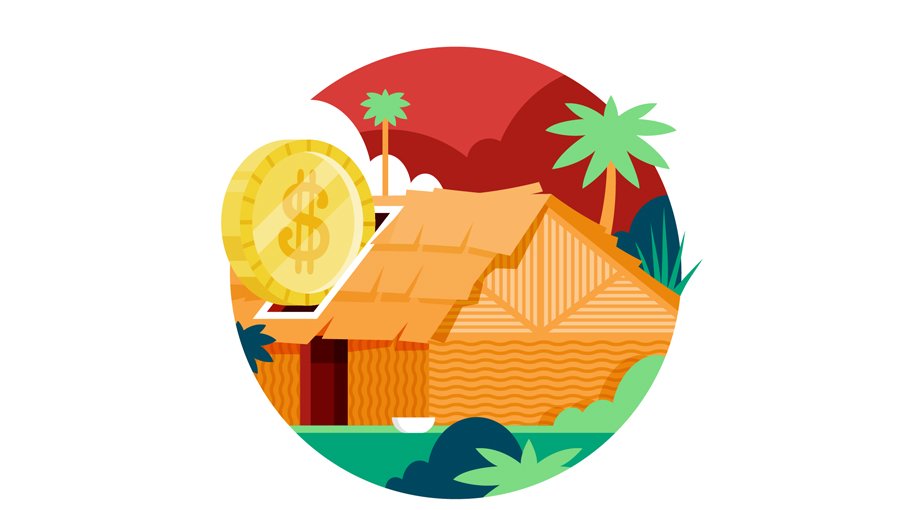The future of global poverty

Another name for poverty is deprivation. The history of poverty in human civilization is ancient. The English philosopher Thomas Hobbes, said on ancient human civilization: “No arts; no letters; no society; and which is worst of all, continual fear and danger of violent death; and the life of man, solitary, poor, nasty, brutish, and short.” According to researchers, about two centuries ago, about 90% of people lived below the poverty line. The history of poverty in Bengal is no different. We found the historical indication of poverty in ancient book ‘Charyapada’.
Even during the Sultanate period, 10%-60% of the people of Bengal lived below the poverty line. Poverty was even worse during the Pakistan period. As a result of exploitation and relentless discrimination by Pakistanis, the poverty rate in post-independence Bengal was about 73%.
Based on the poverty alleviation data provide we get an idea of the past and possible future of poverty. The global poverty rate was around 6% in 1990, and in 2015 it stood at 15%. Prior to the COVID-19 epidemic, the poverty rate in 2019 was about 9%. This unimaginable achievement of global poverty reduction is a great achievement for mankind. If the poverty rate continues to decrease at this rate, it is not impossible to eradicate poverty from the world in the near future. Economists predict that the global poverty rate will be 7.4% by 2100, but that the rate will change to 6.8% as the COVID-19 epidemic hinders the progress of poverty alleviation.
Reducing the poverty rate is certainly good news for mankind. However, there is still much disagreement over the measurement of global poverty. Since poverty is a multidimensional problem, all its dimensions have to be measured in order to understand poverty. Also the class division of extreme poverty, tolerable poverty or relative poverty has further complicated the definition of poverty. While global success in reducing poverty has been significant, the increase in relative poverty and social inequality is causing differentiated problems worldwide.
The inequality of income that represents the
inequitable class-based society of the future
depicts the dark, oppressed human civilization that preceded
the industrial revolution. Although the next
global number-based poverty alleviation is
possible, it will give birth to
a discriminatory society
The top 1% of the world's rich currently own 48% of the world's wealth. This abnormal rate of affluence has been steadily increasing over time, as has the economic inequality between rich and poor in society. According to a report published by Harvard University, the wealth of the rich will increase by 20-24% by 2050, while the wealth of the poor will decrease by 9-10%. One of the hallmarks of economic inequality that will emerge in the next world is the internal income inequality of countries. Although international economic inequality will be reduced by 2050, the internal classification and income inequality of different countries will become more pronounced. Around 70% of people worldwide will be victims of internal discrimination.
The growing advancement of technology has created a huge number of jobs worldwide through industrialization. Due to the large labor market compared to the past, the rate of extreme poverty has decreased significantly. In the past, a worker's only need was food, clothing, and a place to sleep. But over time, that demand has changed. Now a worker needs a television, mobile phone or fridge.
At present, it is not realistic to diagnose poverty by measuring only 2112 calories. Long-term and sustainable poverty alleviation requires good health, education, economic inclusion and civic service. In the absence of these, the amount of extreme poverty is reduced, but relative poverty is born in the society which gives rise to obvious social inequality. On closer inspection, social inequality is a growing vicious cycle that makes the rich richer and the poor more inequitable.
Apparently, technological advancement and industrialization are reducing poverty worldwide, but it is also giving rise to obvious social inequalities. Even if the poverty rate falls below 10% by 2050, will it really be possible to alleviate poverty? The inequality of income that represents the inequitable class-based society of the future depicts the dark, oppressed human civilization that preceded the Industrial Revolution. Although the next global number-based poverty alleviation is possible, it will give birth to a markedly discriminatory society. Only a balanced distribution of wealth and real social justice can solve that problem of the future world. The path to building a world of equality for the future should be the food of thought for today's policy makers.
Fazly Rabbi is Engineer & Columnist



